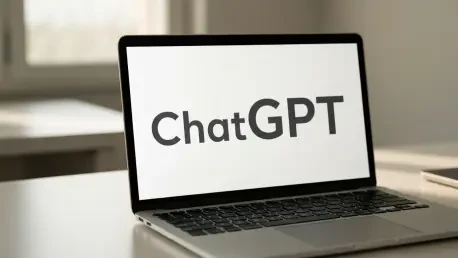Setting the Stage for AI-Driven Content Visibility
In an era where digital content consumption is increasingly mediated by artificial intelligence, the ability to secure visibility through tools like ChatGPT has become a game-changer for marketers and creators. Consider the staggering reality that millions of daily queries are now processed by large language models (LLMs), often determining which information reaches users first. This shift raises a critical challenge: how can content be crafted to stand out in an AI-curated landscape? This review dives into the mechanisms behind ChatGPT’s citation strategies, dissecting the technology’s approach to content selection and offering insights into optimizing for machine-driven discovery.
The focus here is on understanding how ChatGPT prioritizes and cites content within its responses, a process that reshapes traditional search engine optimization (SEO) paradigms. By analyzing key traits, performance metrics, and real-world applications, this evaluation aims to provide a clear picture of what drives AI citations. The goal is to equip digital professionals with actionable strategies to enhance visibility in an increasingly automated information ecosystem.
Decoding the Citation Mechanisms of ChatGPT
At the core of ChatGPT’s functionality lies a sophisticated selection process that determines which content is cited in its responses. Unlike traditional search engines that rely heavily on keyword density and backlinks, this technology evaluates relevance through context, structure, and authority signals. The model’s ability to parse vast datasets and extract concise answers hinges on content that aligns with user intent and machine readability, marking a significant departure from human-centric SEO approaches.
This shift underscores the growing importance of AI in digital marketing and content discovery. As LLMs become primary gateways for information access, their citation practices influence brand visibility and traffic flow. Understanding these mechanisms is not merely a technical exercise but a strategic imperative for anyone aiming to maintain relevance in a competitive digital space.
Key Traits That Boost Citation Likelihood
Answer Capsules and Modular Design
One standout feature in ChatGPT’s citation strategy is its preference for “answer capsules”—succinct, query-focused summaries that deliver immediate value. Studies indicate that content structured in this way sees a 40% higher likelihood of being referenced, as it minimizes processing effort for the model. This trait highlights the need for content to be distilled into clear, bite-sized insights that directly address user questions.
Beyond concise summaries, modular formats such as bullet points and lists play a pivotal role in enhancing AI readability. These structures allow the technology to quickly scan and extract relevant information, prioritizing clarity over dense prose. Content creators must therefore rethink traditional narrative styles, focusing instead on formats that cater to rapid comprehension by automated systems.
Structured Formatting for Machine Parsing
Clean formatting emerges as another critical factor, with well-organized content boasting a 25% increase in citation rates. ChatGPT favors layouts with distinct headings, short paragraphs, and logical flow, as these elements facilitate efficient data extraction. This preference reflects the model’s reliance on structural cues to interpret and prioritize information.
Technical enhancements like schema markup further amplify a piece of content’s appeal to AI systems. By embedding structured data, creators can make their work more machine-friendly, ensuring it aligns with the parsing capabilities of LLMs. This intersection of design and technology underscores the need for meticulous attention to layout as a core component of AI SEO.
Original Data as a Marker of Authority
Content backed by proprietary research or unique statistics stands out dramatically, with citation chances rising by up to 60%. ChatGPT appears to prioritize original data as a signal of credibility, favoring sources that offer fresh insights over generic information. This trend emphasizes the value of investing in unique studies or analyses to establish thought leadership.
Strategies such as “LLM seeding”—distributing original data across high-authority platforms—can further boost visibility. By ensuring that novel insights are widely accessible, brands can increase the likelihood of AI pickup. The focus on originality serves as a reminder that differentiation remains a powerful tool in a crowded digital marketplace.
Aligning with User Intent and Vocabulary
Relevance to user intent is paramount, as ChatGPT tailors responses based on whether queries are informational, navigational, or transactional. Content must anticipate the broader context that LLMs infer, addressing not just the explicit question but also related subtopics. This alignment ensures that responses resonate with the model’s interpretation of searcher needs.
Vocabulary optimization and reinforcing E-E-A-T signals—Experience, Expertise, Authoritativeness, Trustworthiness—also play a vital role. Techniques like keyword clustering around intent themes help content mirror user search patterns, while strong authority markers enhance trust. This dual focus on language and credibility is essential for securing a spot in AI-generated answers.
Emerging Trends in AI SEO Practices
The landscape of SEO is undergoing a profound transformation, moving from human-oriented optimization to AI citability. This evolution prioritizes machine-friendly design, where content must be structured for automated interpretation rather than solely for reader engagement. The shift signals a broader redefinition of what constitutes effective digital strategy in an AI-dominated environment.
Recent developments also point to the growing weight of freshness in citation algorithms, with updated content gaining a 30% higher chance of reference. Additionally, user engagement metrics are becoming influential, as LLMs begin to factor in signals like dwell time. These trends suggest that staying current and fostering interaction are now integral to maintaining AI visibility.
Real-World Impact Across Industries
Industries ranging from digital marketing to e-commerce are actively leveraging ChatGPT citation strategies to enhance their online presence. For instance, publishing houses have adopted modular content formats to ensure their articles are easily extractable by AI tools, resulting in increased exposure. This practical application demonstrates the technology’s tangible benefits for visibility.
In the e-commerce sector, brands have successfully utilized original data, such as customer behavior studies, to earn citations in ChatGPT responses. These implementations not only drive traffic but also position companies as authoritative sources within their niches. Such examples illustrate the diverse ways in which AI optimization can translate into measurable outcomes.
Challenges in Optimizing for AI Citations
Despite the advantages, optimizing for ChatGPT citations comes with notable hurdles. Over-optimization poses a risk, as excessive focus on AI readability can compromise content quality for human audiences. Striking a balance between machine and user needs remains a persistent challenge for creators navigating this dual landscape.
Ethical concerns around transparency also surface, particularly regarding how AI citations may obscure original sources. Additionally, the constant evolution of LLM algorithms demands ongoing adaptation, as citation criteria shift unpredictably. Addressing these issues requires a commitment to ethical practices and agility in strategy refinement.
Looking Ahead at AI SEO Innovations
The future of ChatGPT citation strategies promises exciting advancements, including the integration of multimodal content like images and videos. Such developments could expand the scope of what AI systems cite, offering new avenues for creative expression. Staying attuned to these possibilities will be crucial for maintaining a competitive edge.
Technologies like Retrieval-Augmented Generation may further refine how content is sourced and presented, blending real-time data retrieval with response generation. This progression hints at a deeper impact on digital visibility and brand authority. As AI continues to mediate information access, its influence on content creation will likely grow even more profound.
Reflecting on the Journey of AI Citation Optimization
Looking back, this exploration of ChatGPT citation strategies revealed a technology that fundamentally altered the dynamics of digital visibility. The emphasis on answer capsules, structured formatting, original data, and user intent alignment provided a robust framework for navigating AI-driven content discovery. Each element underscored the intricate balance between technical precision and authentic value.
Moving forward, the path involves continuous adaptation to evolving algorithms and embracing emerging tools to monitor citation trends. Prioritizing ethical transparency and investing in unique insights stand out as actionable steps for sustained relevance. As the digital landscape keeps transforming, the focus shifts toward integrating multimodal formats and anticipating hybrid AI systems to ensure lasting impact in a machine-mediated world.









